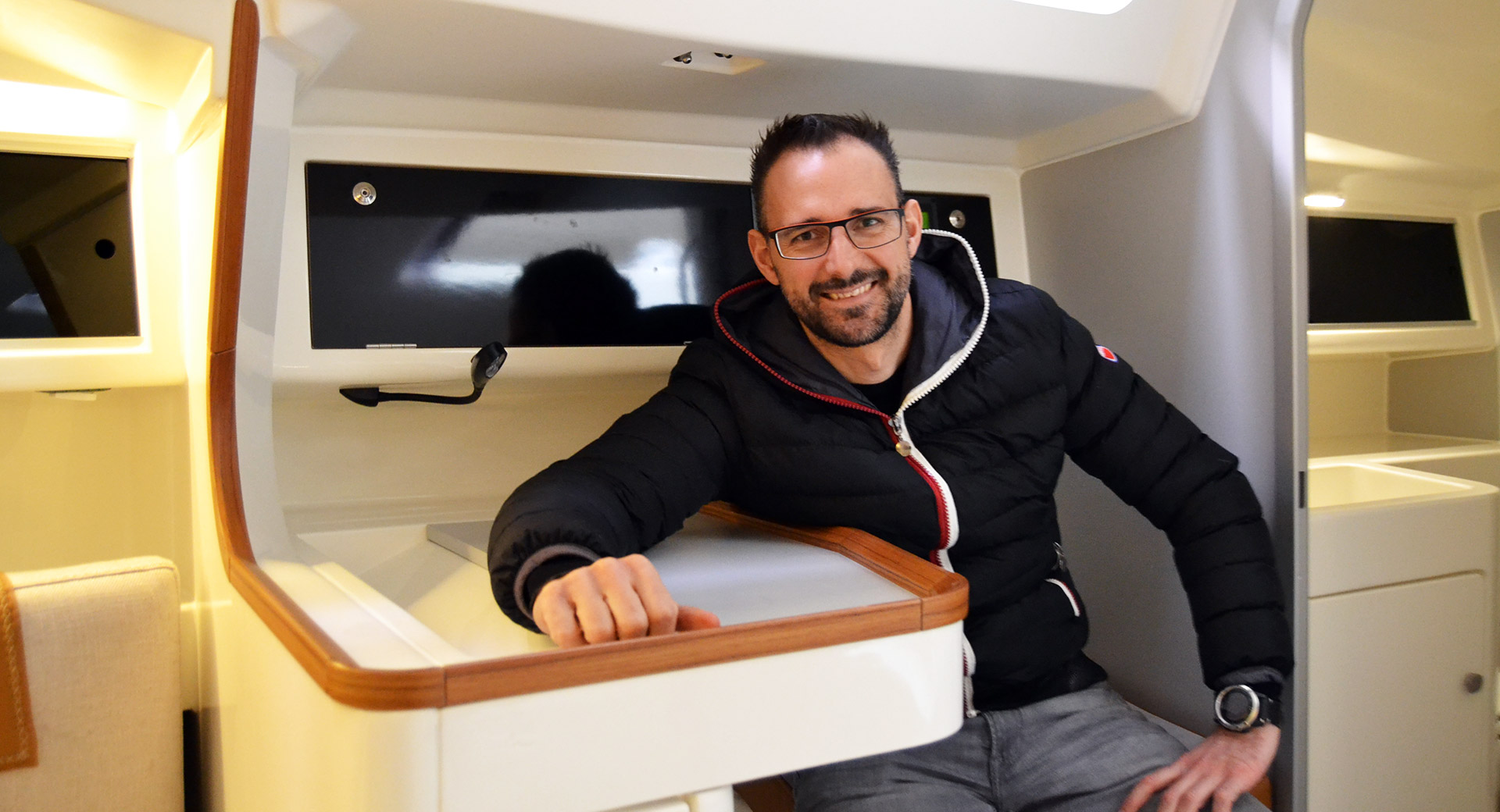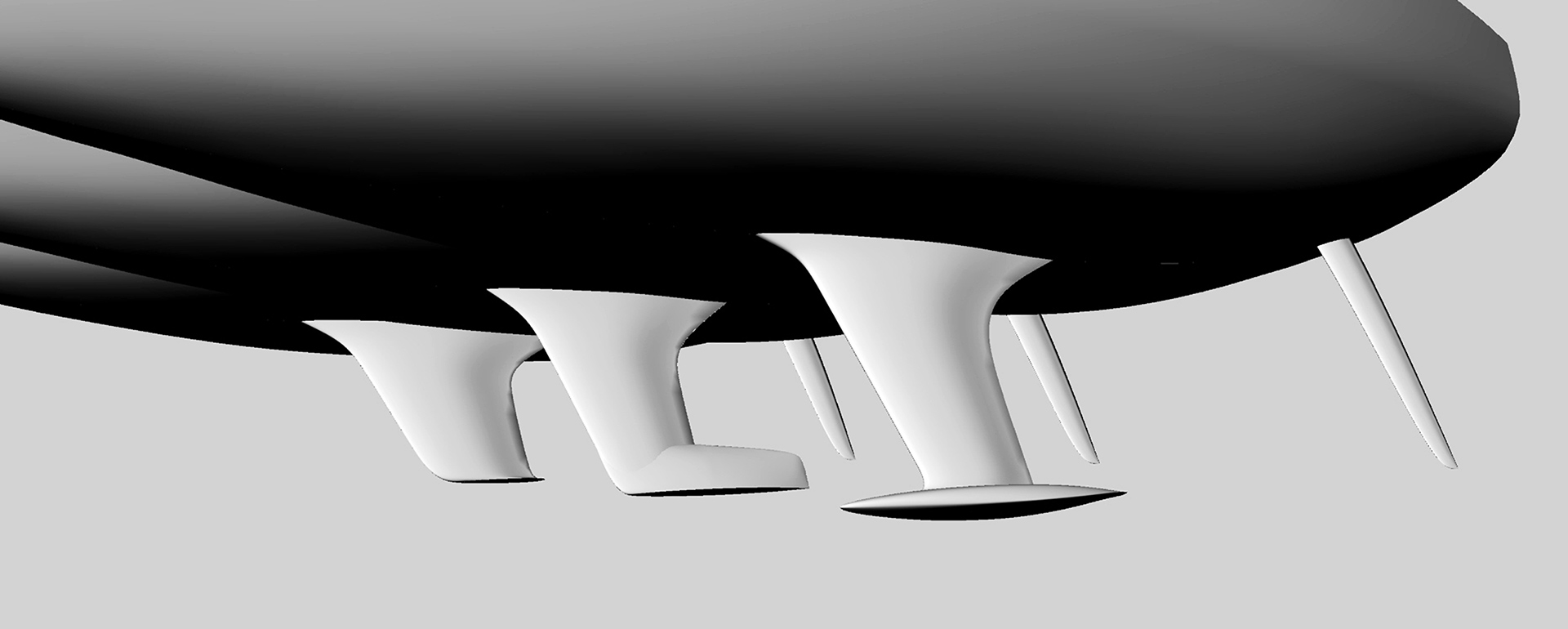Matteo Polli is a thriving young naval architect who already has a substantial name in the sailing world. It was his work on the Italia Yachts cruising line which made the success of the brand possible and defined the looks of the luxury cruisers Made in Chioggia. But it was the instant blitz-success of the Italia 9.98 Fuori Serie which was winning the ORC World Championships of 2015 and 2016 upon arrival at the scene which was skyrocketing his name. Now the latest of his projects, the wonderful Italia Yachts 11.98 Bellissima is freaking out both race-oriented sailors and sporty cruising skippers all around the globe

One of the recipes of designing a great sailboat is the topic appendages. That´s a wide field and often mentioned and so I used the chance to grab some first-hand information from Matteo when I last met him. Here´s what we´ve talked about:
Lars Reisberg | NO FRILLS SAILING.com: “Matteo, for a “light opening”, please describe what “appendage” in modern yacht-design means.”
Matteo Polli: “Well, in old times, the keel and the rudder were integral parts of the hull. But in the quest for more and more performance designers found out that using separate vertical foils was much more efficient. From that time on these two important parts have been designated with the term appendage.”
NFS.com: “What influence does the appendages, that´s keel and rudder, have on the performance of the boat in general?”
Matteo Polli: “Essentially, keel and rudder on a sailing boat play very important roles. Both are providing the necessary lift that is required by the sail plan. They are also producing the force for balancing and manoeuvring. Moreover, the keel is also structurally employed to carry the load of the ballast required to lower the overall centre of gravity, thus giving enough stability to the boat. All of this must be done producing the smallest amount of drag. The ratio between lift and drag generated by the appendages has a huge impact on performance in upwind conditions.”

NFS.com: “What is the challenge a naval architect faces when designing keel & rudder? Why is a thorough design of these things so important?”
Matteo Polli: “For the reasons explained above, finding the correct balance is not easy. The designer has to face a big challenge in order to find the optimal solution in the various trade-offs in order to maximize the efficiency respecting the design brief standing points.”
NFS.com: “What is the interaction between rig and appendages like?”
Matteo Polli: “Of course appendages design must take into account the sail plan since the balance between the two is fundamental. Sizing keel and rudder and their positioning is probably one of the most difficult tasks in sailing boat design. Finding the best balance means achieving a big performance edge and also a more enjoyable experience when sailing.”

NFS.com: “Do you have examples of how different design approaches of a keel-form has different influences on the performance of a sailing yacht?”
Matteo Polli: “This is a complex question to answer without getting all too technical, however I can give some examples. If we imagine a very deep and small chord keel compared to a shallow big keel the first will have a very high efficiency and but it will also be very difficult to steer. This must be always taken into account from the designer, since not always the theoretically most efficient shape is the overall best choice. Same for the rudder blades – how does the form and design of a very blade enhance or hinder performance? For the rudders it is basically the same like for the keel. But to make a different example, a very thin airfoil section allows a big drag reduction, however it will be very critical to stall therefore the designer must find the best solution in order to minimize drag but avoid the crew to broach at every single gust.”
NFS.com: “What do you think of double rudder-blade configuration?”
Matteo Polli: “In my view the double rudder blade solution is very effective only when the hull waterline is wide at the stern in the seek for planing ability. A conventional sailing boat can reach planing speed only when reaching in medium to strong winds provided that the ratio between displacement and sail area is low enough. On the other hand, the combination of a wide stern and double rudder is increasing a lot the wetted surface at low heeling angles and therefore compromising performance in light winds. For these reasons, I do not think this solution can really offer the best compromise in the overall set of possible sailing conditions, despite it remains probably the best for downwind sailing in a strong wind.”
NFS.com: “Practical question: How can a client, willing to invest in a new boat, “see” if the hull/appendages/rig proportions are set in the right way?”
Matteo Polli: “Well, surely, just looking at a boat, it would be difficult also for a designer. The best way, is always to test the boat in different conditions and relate to what the final use will be.”

NFS.com: “Last but not least, Matteo, what makes the boats of Italia Yachts so special in this respect from your point of view?”
Matteo Polli: “I don´t think there is something really special in these boats. I´d rather say it is just the mixture of all the features mentioned above which are making these boats just fun to sail. Probably, the sailing boat market is pushing boat yards to produce boats that have other kind of main objectives leaving the sailing experience behind. So when comparing the market offer looking for a real sailing boat it is easy to see the difference, I would say.”
Thanks, Matteo again, for this quick insight into your work as a naval architect and the special focus on your great efforts on the new generation Italia Yachts boats, like the 9.98 Fuori Serie and the all-new 11.98 Bellissima which are currently stirring up the performance boat market.
Interested in more naval architects and their views on designing a boat?
Marc Lombard on designing a boat
Mark Mills on designing the Vismara V62 SUPER NIKKA
Javier Soto Acebal on his work for Solaris
